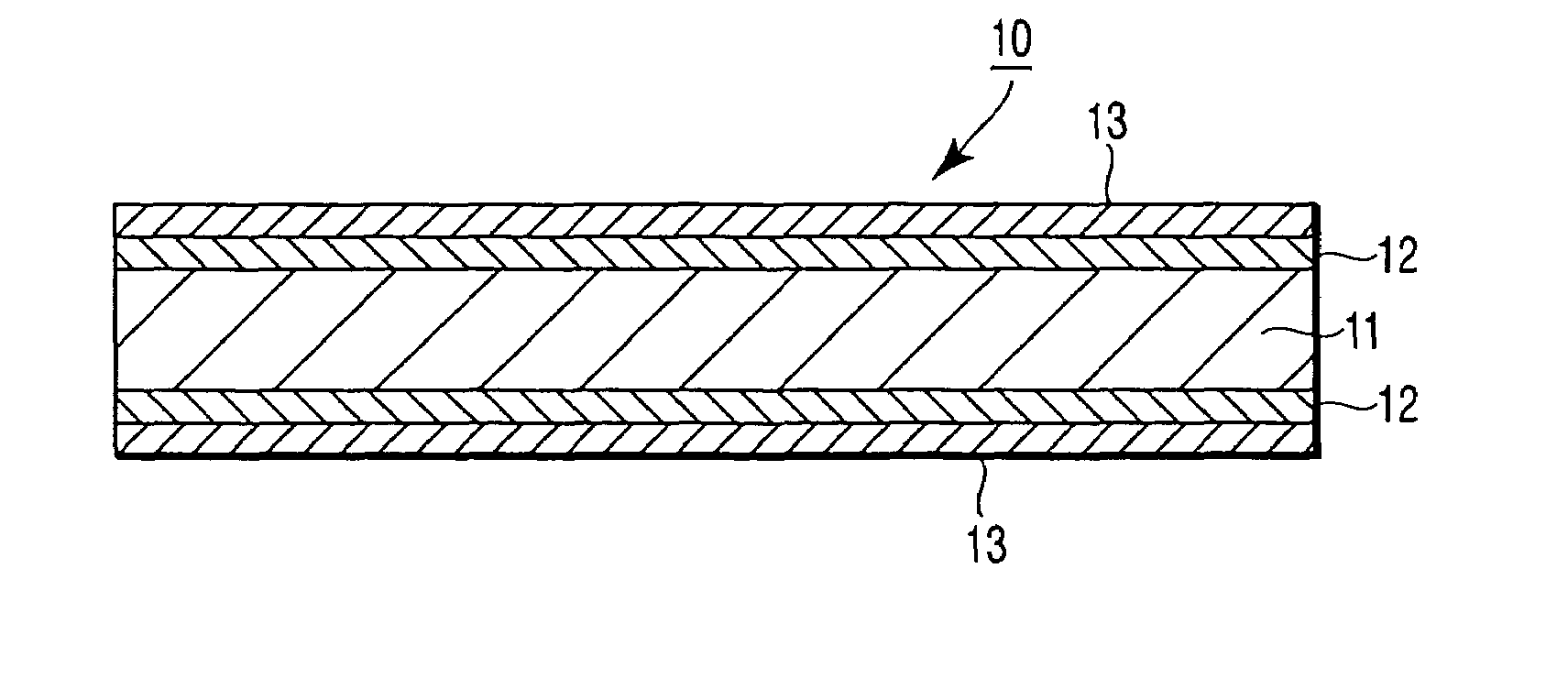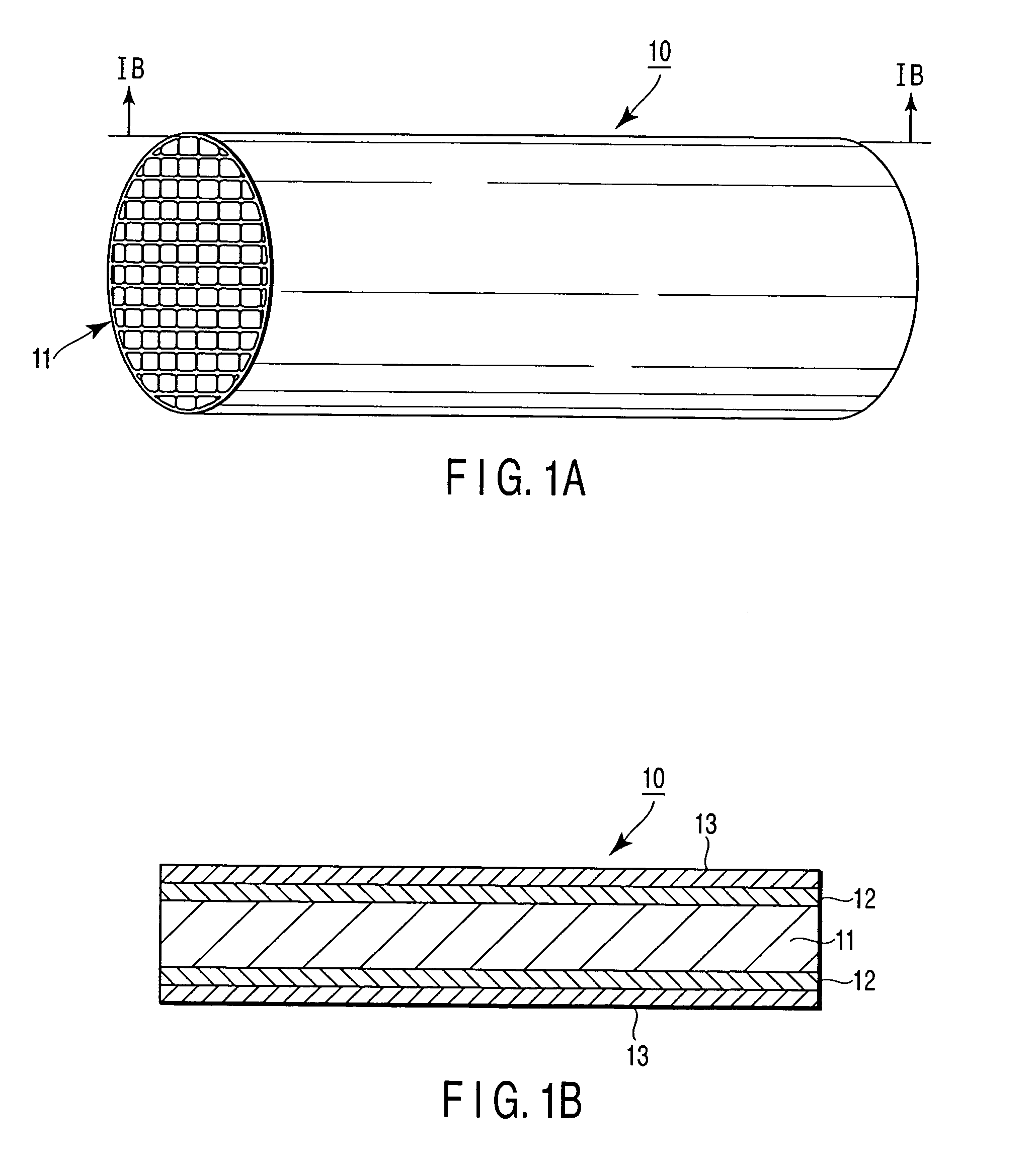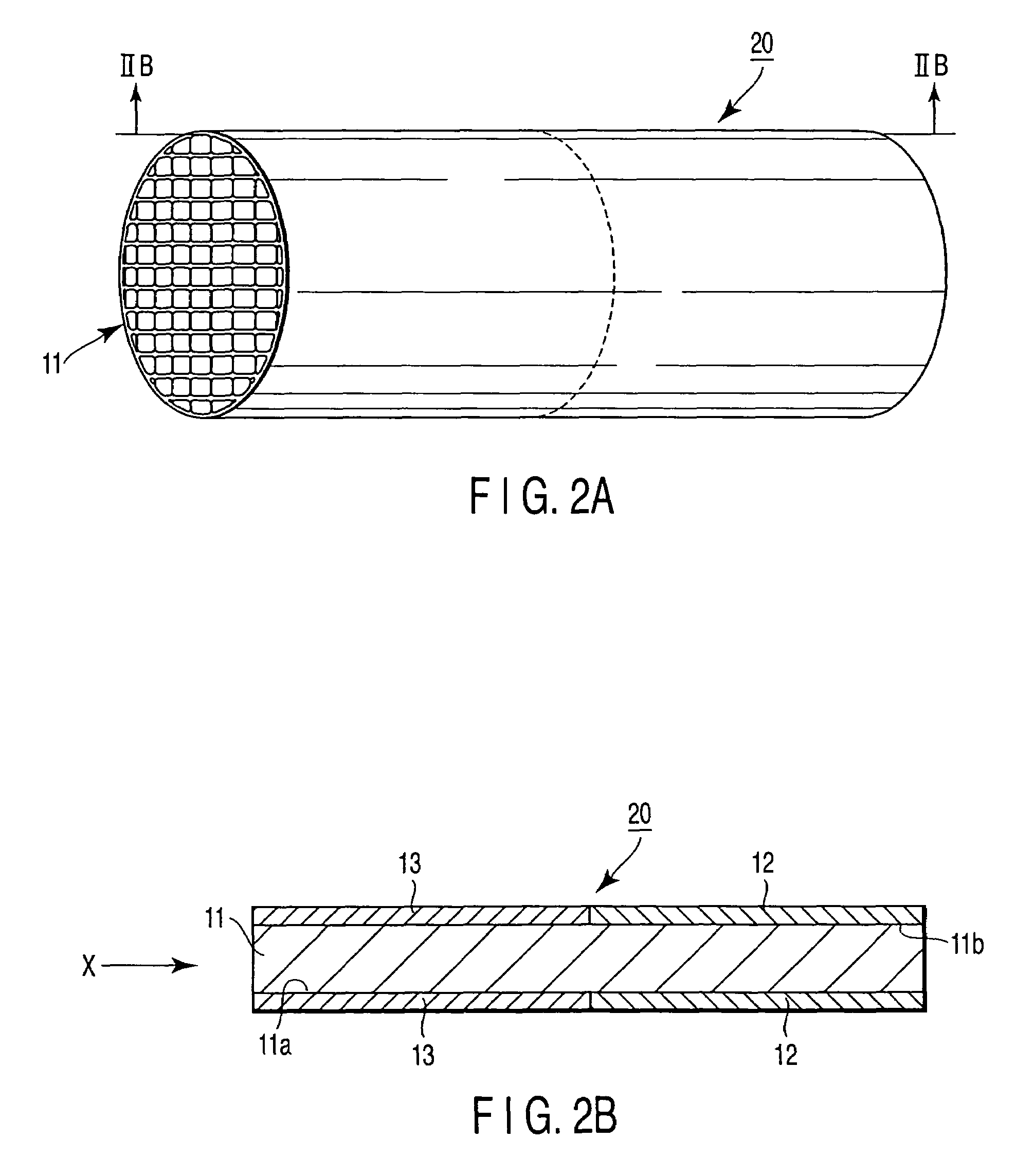Exhaust gas-purifying catalyst system
a catalyst system and exhaust gas technology, applied in physical/chemical process catalysts, metal/metal-oxide/metal-hydroxide catalysts, separation processes, etc., can solve the problems of severer and severer regulation value of no/sub>x in exhaust gas, and achieve excellent elimination performance of nox
- Summary
- Abstract
- Description
- Claims
- Application Information
AI Technical Summary
Benefits of technology
Problems solved by technology
Method used
Image
Examples
example 1
[0041]A cordierite monolithic honeycomb support body (volume: 1.0 L) was coated with a slurry (slurry 1) consisting of an aqueous platinum nitrate solution (0.5 g of Pt), 100 g of an alumina powder, 50 g of a powder of cerium zirconium complex oxide material, 50 g of an aqueous aluminum nitrate solution having a concentration of 50% by weight, and 200 g of water. Then, the coated slurry was dried at 200 to 250° C. for one hour and subsequently baked at 550° C. for 2 hours, forming a second catalyst layer on the surface of the support body. Next, the surface of the second catalyst layer was coated with a slurry (slurry 2) consisting of an aqueous rhodium nitrate solution (0.5 g of Rh), 100 g of an alumina powder, a powder of barium sulfate, 50 g of an aqueous aluminum nitrate solution having a concentration of 50% by weight, and 150 g of water. The coated slurry was dried at 250° C. for one hour and subsequently baked at 550° C. for 2 hours, forming a first catalyst layer on the surf...
example 2
[0042]A cordierite monolithic honeycomb support body (volume: 1.0 L) was coated with the slurry 1 prepared in Example 1, and dried and baked similarly, forming a second catalyst layer. Then, the surface of the second catalyst layer was coated with a slurry (slurry 3) consisting of an aqueous rhodium nitrate solution (0.5 g of Rh), 100 g of an alumina powder, 50 g of a powder of cerium zirconium complex oxide material, a powder of barium sulfate, 50 g of an aqueous aluminum nitrate solution having a concentration of 50% by weight, and 150 g of water, and dried and baked similarly, forming a first catalyst layer on the surface of the second catalyst layer. The powder of barium sulfate was mixed in the slurry 3 such that the first catalyst layer after the baking step contained 0.1 mol / L of barium sulfate. In this way, a desired catalyst system of a double-layer structure was obtained.
example 3
[0043]A cordierite monolithic honeycomb support body (volume: 1.0 L) was coated with a slurry (slurry 4) consisting of an aqueous palladium nitrate solution (0.5 g of Pd), 100 g of an alumina powder, 50 g of a powder of cerium zirconium complex oxide material, a powder of barium sulfate, 50 g of an aqueous aluminum nitrate solution having a concentration of 50% by weight, and 200 g of water. The coated slurry was dried at 250° C. for one hour and subsequently baked at 550° C. for 2 hours, forming a second catalyst layer on the surface of the support body. The barium sulfate powder was mixed in the slurry 4 such that the second catalyst layer after the baking step contained barium sulfate in an amount of 0.1 mol / L. Then, the second catalyst layer was coated with the slurry 2 prepared in Example 1, and dried and baked similarly. In this way, a desired catalyst system of a double-layer structure was obtained.
PUM
| Property | Measurement | Unit |
|---|---|---|
| BET specific surface area | aaaaa | aaaaa |
| particle diameter | aaaaa | aaaaa |
| particle diameter | aaaaa | aaaaa |
Abstract
Description
Claims
Application Information
 Login to View More
Login to View More - R&D
- Intellectual Property
- Life Sciences
- Materials
- Tech Scout
- Unparalleled Data Quality
- Higher Quality Content
- 60% Fewer Hallucinations
Browse by: Latest US Patents, China's latest patents, Technical Efficacy Thesaurus, Application Domain, Technology Topic, Popular Technical Reports.
© 2025 PatSnap. All rights reserved.Legal|Privacy policy|Modern Slavery Act Transparency Statement|Sitemap|About US| Contact US: help@patsnap.com



